Save images in Ms Word documents into separate files
Using the Insert menu in Microsoft Word, you can add photos to your text to give the document a vivid look. When done this way, photos are attached to Word documents and have nothing to do with the files used to insert them from outside the document, so it's a bit difficult when you want to take that image separately. .
Imagine the scenario: someone sends a document with a lot of images attached and you need those photos in separate files. However, for some reason, the sender cannot send each image file separately.
So now you have to open the document, select each image, copy it, paste it into your favorite photo editing program on your computer and then save it as a file. However this way is too time consuming. You can create a script or macro to copy the photos, but this will cause you to do more. By saving the document file to a Web page format (Word 2000, Word 2002 / XP, or Word 2003) or extracting the .docx file (Word 2007) you can quickly save the attached images to individual image files.
Save as file as Web page
Follow these steps in Word 2000, Word 2002 / XP or Word 2003:
1. Open the Word document.
2. Click File from the Standard toolbar
3. Click Save As
4. Specify the location to save the file in the Save in section.
5. Select Web Page (* .htm; * .html) from the Save as type drop-down menu as shown in Figure A
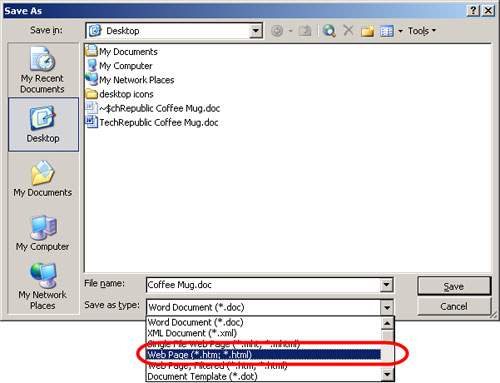
Picture A
After saving the document to a Web page file, Word creates an .htm file and a folder containing the images already in the file (see Figure B).
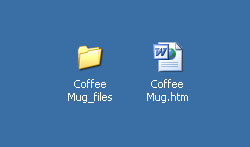
Figure B
By default, Word saves secondary files to a folder with the same name and location as the .htm file. You can assign Word to save extra files in the same location as the .htm file (usually saved to the same folder) from the Web Options settings window.
The .htm file contains the content, format, properties, images . Open the .htm file with the HTML editor, you can see the Word code. However, it is important that you now have separate image files to use for necessary purposes.
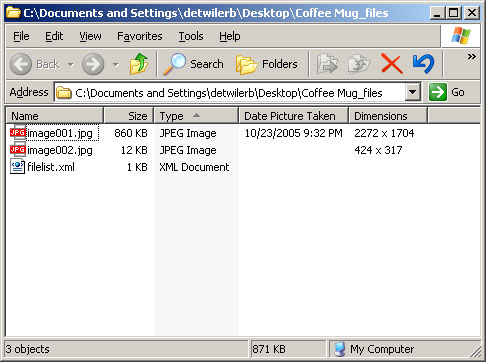
Figure C
If the image has been resized when included in Word, the folder containing the image will include the original and resized image. Word will maintain each original format of the file (.jpg, .png .) but will not maintain the original file name. Word will rename the files and sort them up starting from the first image in the file. The original image will be placed immediately before the resized file.
Depending on the Web Options settings, Word can automatically create a resized image when saving as to a Web page format. Word can also convert images to .gif format. For example, if you do not choose in Web Options to allow .png as an image format and in a file with a .png file inserted, the folder containing the supported files will include the original image file and the edited image file. edit size and format to .gif.
You can copy these image files to another location if needed.
Extract .docx file
With Word 2007, Microsoft has included the .docx file format based on XML. This new format is essentially a ZIP format, which is a series of XML files and images attached to the file. To access the attached images in the .docx file, follow these steps:
1. If it is not in .docx format, open the file via Word 2007 and save the file as (* .docx).
2. Change the extension of the original .docx file to .zip as shown in Figure D
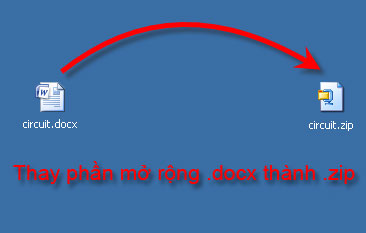
Figure D
3. Open the file with a ZIP application. The image files will be listed in the upper part of the file list as shown in Figure E
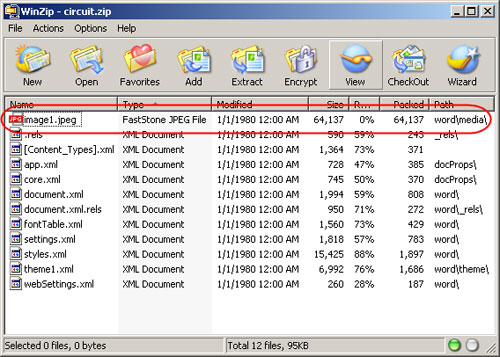
Figure E
You can also copy these image files to another folder if needed.
You should read it
- How to create text wallpaper in Word
- Insert text into pictures with Word
- Insert images into text content
- How to Insert Hyperlinks in Microsoft Word
- How to insert Video into Word
- No need to use software, here are 3 ways to get images from Word files fastest
- How to insert text into images on Word
- How to insert online and offline videos into Word
May be interested
- How to quickly save all pictures in Word file into a separate folder
 how to quickly save all pictures in word file into a separate folder. for some reason you want to quickly save all images in word files into a separate folder to get the images used. so, please refer to the following article for ways to save her images
how to quickly save all pictures in word file into a separate folder. for some reason you want to quickly save all images in word files into a separate folder to get the images used. so, please refer to the following article for ways to save her images - How to hide images in Microsoft Word for easier reading
 an image in a microsoft word document can replace thousands of words, but sometimes you want to quickly see the document, it can interfere with fast scrolling, especially on multi-image documents. however, there is a little-known feature in word that allows you to hide all these images on documents and replace them with a temporary placeholder frame.
an image in a microsoft word document can replace thousands of words, but sometimes you want to quickly see the document, it can interfere with fast scrolling, especially on multi-image documents. however, there is a little-known feature in word that allows you to hide all these images on documents and replace them with a temporary placeholder frame. - Convert Word documents to JPG image files
 convert word documents to jpg image files, if you want to convert word documents into jpg images, you can use doc to image converter software, an easy-to-use software for quick conversion.
convert word documents to jpg image files, if you want to convert word documents into jpg images, you can use doc to image converter software, an easy-to-use software for quick conversion. - How to Convert Word Files to PDF Format
 this article shows you how to convert microsoft word documents to pdf format. pdf files are compatible with almost any interface and are difficult to edit, suitable for storing and sending important documents. you can use smallpdf or google drive to convert word documents to pdf format online, or use microsoft word on a windows or mac computer.
this article shows you how to convert microsoft word documents to pdf format. pdf files are compatible with almost any interface and are difficult to edit, suitable for storing and sending important documents. you can use smallpdf or google drive to convert word documents to pdf format online, or use microsoft word on a windows or mac computer. - How to Recover Unsaved Word Documents on Mac
 when working with word on a mac, sometimes the system crashes or word errors cannot be fixed, causing the content being edited to be lost. so how to recover unsaved word documents on a mac?
when working with word on a mac, sometimes the system crashes or word errors cannot be fixed, causing the content being edited to be lost. so how to recover unsaved word documents on a mac? - Word 2013 Complete Guide (Part 3): How to store and share documents
 when creating a new document in word, you'll need to know how to save the document to be accessible and edited later. as with previous versions of word, you can easily save files on your computer
when creating a new document in word, you'll need to know how to save the document to be accessible and edited later. as with previous versions of word, you can easily save files on your computer - How to merge multiple Word files into a single file
 to merge multiple word files into a single file, we can immediately use the features available on this office tool.
to merge multiple word files into a single file, we can immediately use the features available on this office tool. - Find a way to fix the error of Word files not displaying images quickly and effectively
 word files not displaying images is one of the common problems many users encounter when inserting images into files.
word files not displaying images is one of the common problems many users encounter when inserting images into files. - Extract images from PDF files
 extracting images from pdf files for use for different purposes is the need of many people. in this article will have all the way to get photos from pdf files quickly, easily, please consult.
extracting images from pdf files for use for different purposes is the need of many people. in this article will have all the way to get photos from pdf files quickly, easily, please consult. - How to insert images into Word documents
 text will be difficult to read and boring if the whole word is text, lack of illustrations and reduce the effect of conveying the content of the text. so today i introduce to you how to insert images into text and edit photos after inserting.
text will be difficult to read and boring if the whole word is text, lack of illustrations and reduce the effect of conveying the content of the text. so today i introduce to you how to insert images into text and edit photos after inserting.










 First aid for 'frozen' mailbox
First aid for 'frozen' mailbox Conquer Word 2007
Conquer Word 2007 Conquer Word 2007 (phase II)
Conquer Word 2007 (phase II) Conquer Word 2007 ... (period III)
Conquer Word 2007 ... (period III) Some operations with the MS Word window
Some operations with the MS Word window Use WordArt to create image monograms
Use WordArt to create image monograms